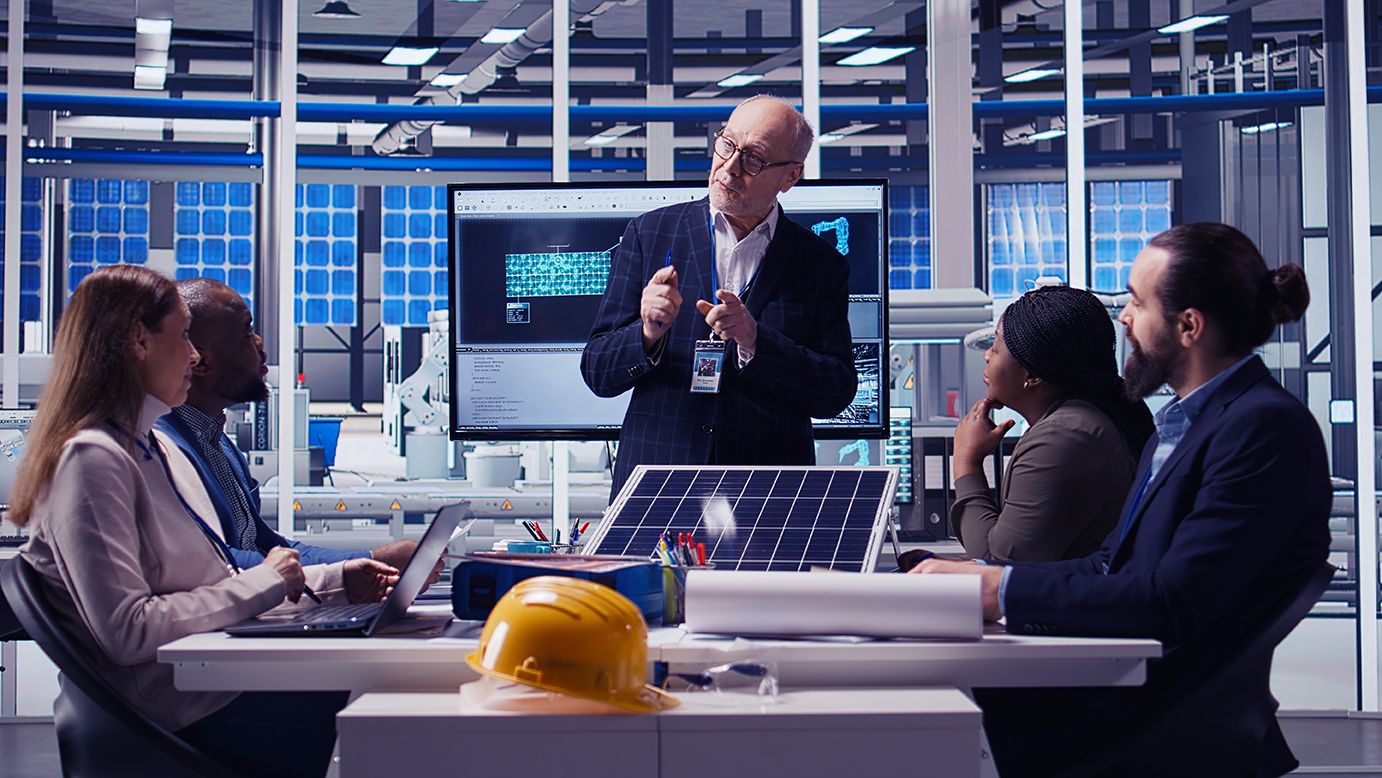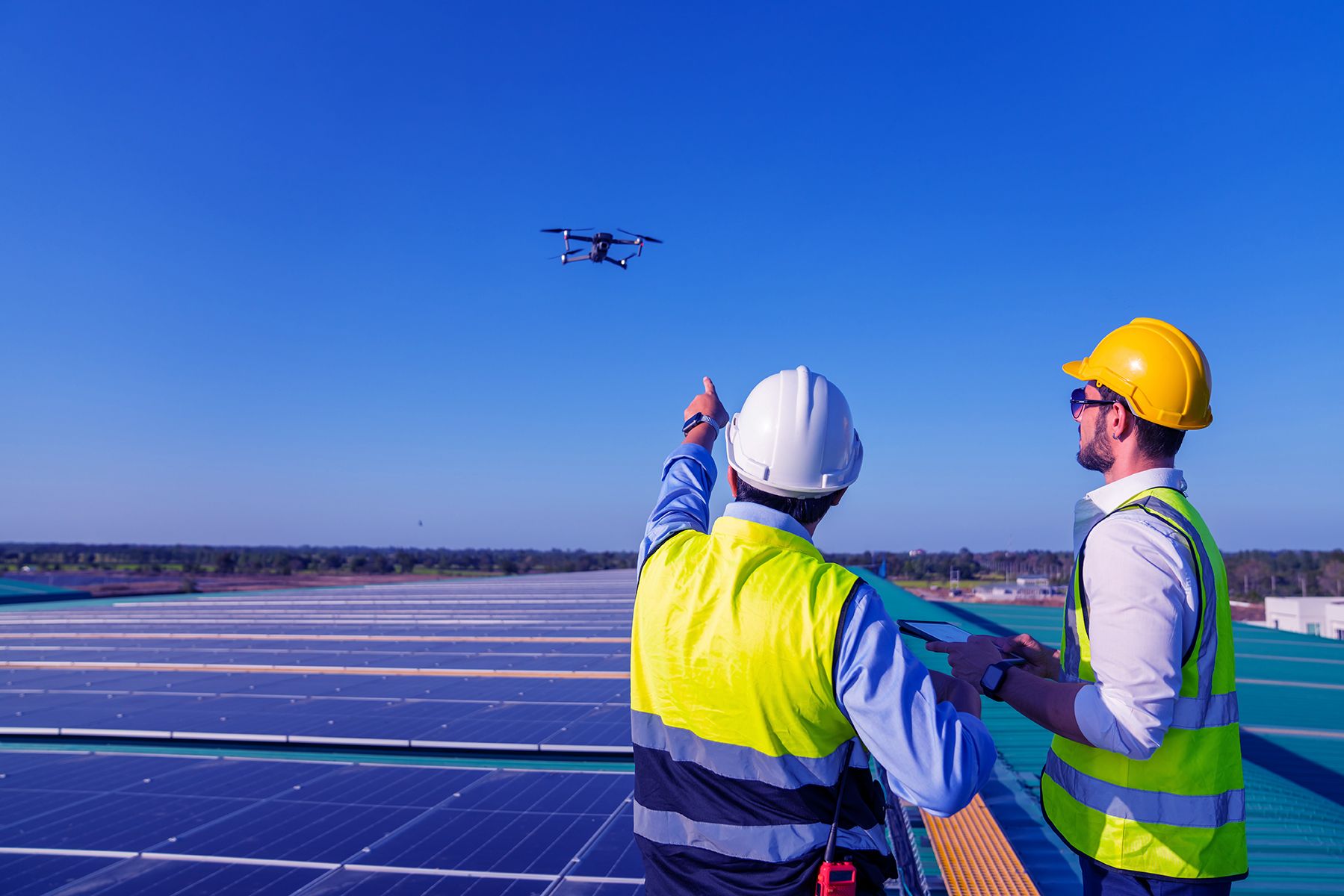TREND FIVE:
CLEAN ENERGY ASSET MAINTENANCE
Many clean energy assets – and particularly offshore wind turbines – are sited in remote locations where they are subject to the elements. This makes monitoring and maintenance difficult and costly. The issue is twofold. First, exposure to saltwater and high winds exacerbates issues such as corrosion, meaning levels of wear and tear are high, increasing maintenance requirements.
At the same time, the remote location makes it difficult (and sometimes dangerous) to get human workers on-site to perform inspections. In response, innovators are developing predictive maintenance and remote monitoring solutions that make monitoring more efficient and reduce risks, such as unplanned outages.
INNOVATION ONE:
Sensing tech prevents offshore wind disruption
Offshore wind capacity is growing rapidly, but wind power faces a number of technical challenges. One major challenge is cable failure, which accounts for around 83 per cent of technical issues that lead to losses and insurance claims. Now, Glasgow-based startup Synaptec has developed sensing technology that can detect 80 per cent of cable faults.
Synaptec uses Distributed Electrical Sensing (DES), which is a precision measurement technology that takes high-fidelity measurements of voltage and current at many locations over distances of up to 60 kilometres from a substation. Because 69 per cent of all cable failures occur in joints and terminations, this is where Synaptec’s system focuses.

The platform provides a simple and convenient way to oversee system commissioning, debugging, and testing.”

The system includes Synthesis, a comprehensive visualisation and analytics platform, which allows the outputs from the sensor arrays to be visualised in real time, enabling operators to respond faster and more efficiently to major grid events. It also provides analysis, helping users track trends over the long term.
Using Synthesis allows operators to make better-informed control room decisions, reducing unplanned maintenance and operational costs and supporting long-term asset management plans. The platform also provides a simple and convenient way to oversee system commissioning, debugging, and testing.
Over the last three years, the company’s technology has been adopted by major energy projects, including Hywind, the world’s first floating offshore wind farm and Dogger Bank Wind Farm, which will be the world’s largest offshore wind farm once complete.
TAKEAWAYS:
- Synaptec has developed sensing technology that can detect 80 per cent of cable faults – a key issue for offshore wind
- The technology takes measurements of voltage and current at many locations over distances of up to 60 kilometres from a substation
- The company’s visualisation and analytics platform enables operators to respond to major grid events and track trends over time
INNOVATION TWO:
Drones inspect green energy installations
Renewable energy installations, such as wind and solar, are growing rapidly. As with traditional energy generation, these systems need regular and comprehensive inspections to ensure they are acting at peak efficiency. To make sure renewable energy assets are maintained in peak condition, SkyVisor is relying on the help of drone-based inspection software.
SkyVisor develops drone software specifically to bring wind and solar park inspections in-house. The company’s all-in-one software suite integrates advanced and automated drone flight with AI-driven defect detection and analysis. By streamlining how inspection data is gathered, interpreted, and actioned, the platform enhances preventive maintenance efforts and helps companies to reduce downtime, saving money and boosting green energy generation long term.
With SkyVisor’s cutting-edge asset management platform, users can easily pinpoint any defects and generate reports automatically. The company also offers an on-site field app, which enables asset managers to easily collaborate with subcontractors, manage anomalies and track defects, and take immediate action on-site.

Since 2018, the company has inspected more than 10 gigawatts of wind and solar assets.”

Since 2018, the company has inspected more than 10 gigawatts of wind and solar assets. SkyVisor currently completes around 8,000 individual inspections each year, detecting over 200,000 defects in wind and solar systems.
The company has recently raised €1.2 million in a funding round backed by Tomcat, the French public investment bank (BPI), Région Île-de-France, and industry-leading investors. The funding will be used to drive international expansion, accelerate SkyVisor’s product development, and strengthen the company’s presence in the wind and solar market.
INNOVATION DATA:
Country: France
Development stage: Launched
Website: skyvisor.ai
Contact: hello@skyvisor.eu
TAKEAWAYS:
- SkyVisor has developed drone software specifically for wind and solar park inspections
- By streamlining how inspection data is gathered, interpreted, and actioned, the platform enhances preventive maintenance efforts
- Since 2018, the company has inspected more than 10 gigawatts of wind and solar assets.
INNOVATION THREE:
Sensor systems for wind turbine blades
Wind energy is growing by leaps and bounds, with wind electricity generation reaching more than 2100 terawatt-hours in 2022. However, to meet the IEA’s Net Zero Emissions by 2050 Scenario, which envisages approximately 7,400 terawatt-hours of wind electricity generation in 2030, an average annual generation growth rate of around 17 per cent is needed.
To help meet this goal, green tech company Eologix-ping has developed a system that uses sensors to increase the efficiency of wind turbines. The wireless and energy-autonomous sensors measure sound emissions or noise to detect potential issues directly on the surface of the turbine blades, including the smallest changes in blade temperature, ice formation, pitch angle, lightning, and more.

By reducing unnecessary and routine inspections, the frequency and efficiency of inspections can be optimised, resulting in cost savings.”
For example, on a wind turbine equipped with Eologix-ping’s sensor system, the system will stop the turbine automatically in the event of safety-relevant ice accumulation on the rotor blades, then start it up again once ice levels are lowered. By managing risk automatically, turbine downtimes are reduced to a minimum, allowing more electricity to be generated from each turbine.
Monitoring blade health continuously also provides data that can inform timely inspections. By reducing unnecessary and routine inspections, the frequency and efficiency of inspections can be optimised, resulting in cost savings. The company describes its system as the “hands, ears, and eyes” of the rotor blades.
TAKEAWAYS:
- Eologix-ping uses sensors to increase the efficiency of wind turbines
- These measure sound emissions to detect potential issues directly on the surface of the turbine blades
- The system can automatically stop the turbine, while the collected data can inform timely inspection
INNOVATION DATA:
Country: Austria
Development stage: Scaling
Website: eologix-ping.com
Contact: office@eologix-ping.com
For data on more clean energy innovations, search the Springwise Library.